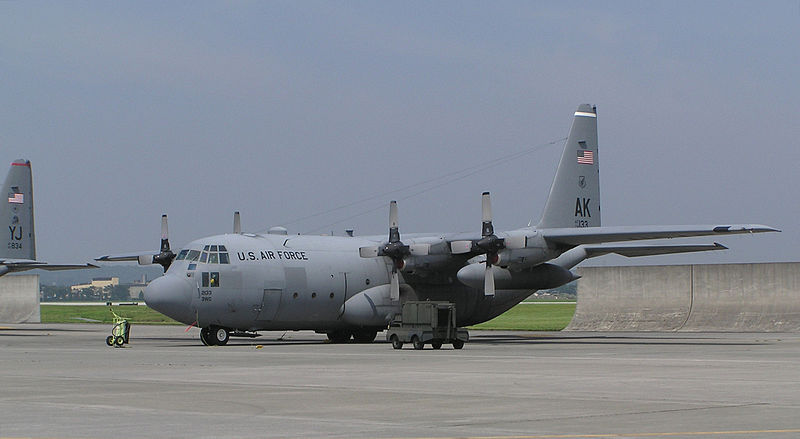Ian Geldard linked to this rather interesting history lesson on the Lockheed C-130 transport aircraft (the RCAF is also a user of this type of plane, along with a large number of other air forces):
Here’s where the story starts to get interesting. After 25 years, the Pentagon decided that it was well stocked with C-130s, so President Jimmy Carter’s administration stopped asking Congress for more of them.
Lockheed was in trouble. A few years earlier, the Air Force had started looking into replacing the Hercules with a new medium-sized transport plane that could handle really short runways, and Lockheed wasn’t selected as one of the finalists. Facing bankruptcy due to cost overruns and cancellations of programs, the company squeezed Uncle Sam for a bailout of around $1 billion in loan guarantees and other relief (which was unusual back then, as William Hartung points out his magisterial Prophets of War: Lockheed Martin and the Making of the Military-Industrial Complex).
[. . .]
So what did Lockheed do about the fate of the C-130? It bypassed the Pentagon and went straight to Congress. Using a procedure known as a congressional “add-on” — that is, an earmark — Lockheed was able to sell the military another fleet of C-130s that it didn’t want.
To be fair, the Air Force did request some C-130s. Thanks to Senator John McCain, the Government Accountability Office (GAO) did a study of how many more C-130s the Air Force requested between 1978 and 1998. The answer: Five.
How many did Congress add on? Two hundred and fifty-six.
[. . .]
The Air Force’s approach of passing unwanted Herks off to the Air Guard and Reserves worked out nicely for Lockheed. The company allied with Air Guard and reservist advocacy groups to lobby Congress further. In an era of base closures, heavily lobbied governors would use the arrival of new planes to argue for the continuing life of bases in their states. In turn, states and their congressional delegations would fight to get new planes or hang onto existing ones. It was a veritable Lockheed feedback loop. Washington Post reporter Walter Pincus quoted a Pentagon official as seeing C-130 politics as a twist on the old military-industrial complex: “a triangle of the Guard, Lockheed, and politicians.”
The result: the military was often prevented from retiring the oldest Herks, the ones that really needed to be put out to pasture. For example, as Pincus reported, the Joint Chiefs and the Air Force concluded in 1996 that they had 50 more C-130s than they needed, but Congress stymied efforts to retire any of them. One tactic used was to hold nominees hostage: a Kentucky senator repeatedly held up Air Force promotions until four Kentucky Air Guard C-130s were taken off the chopping block.




